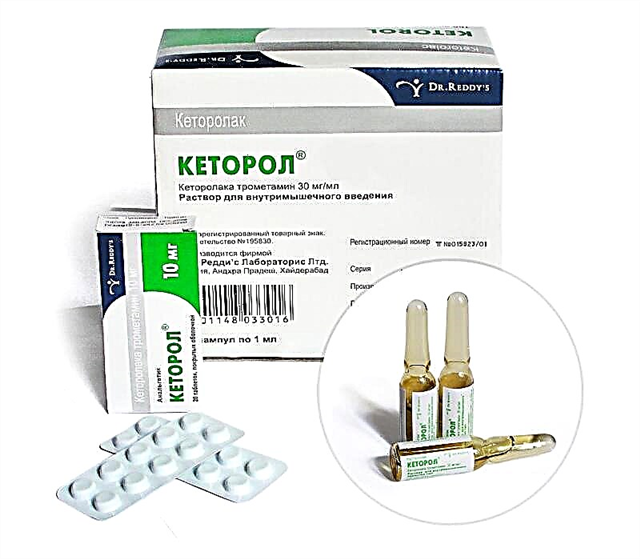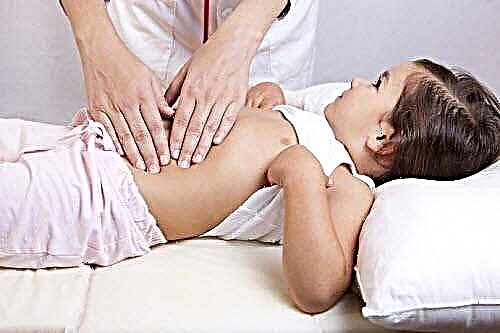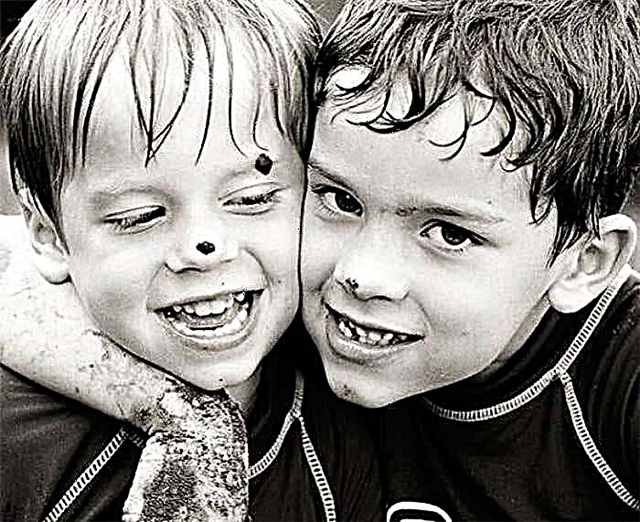Perhaps all parents, without exception, dream of getting rid of boring diapers and expensive diapers. That is why the question of how to potty train a child is one of the most relevant among new mothers. Work on the formation of neatness skills should be based on several principles at once, one of which is taking into account the age of the baby.
Due to physiological characteristics, potty training should not start too early, but also should not be late.
It is also necessary to remember about the factor of individuality: one toddler, already at 9 months old, calmly lands on a night vase, and another, even by the age of three, is not always able to cope with self-service.
Based on the above, you need to find out when and how to potty train your baby. There are a lot of ways to master this skill, but it is better to learn more about the most effective and most natural ones.
About the child's readiness to get to know the potty
Probably, the question of when to potty train a child is the most common and burning question among most modern mothers who want to quickly instill in their baby hygiene skills.
The answer lies in infant physiology. Scientists have proven that from the first days of life and until about one year of age, the child does not control the processes of emptying the intestines and bladder.
That is, such processes are unconditional and do not require the participation of the cerebral cortex. Consequently, the baby does not feel the fullness of the rectal canal and bladder.
The main goal of teaching a child the skills of neatness, in simple terms, is to make the unconditioned reaction conditional - that is, to make the processes of urination and defecation volitional and meaningful acts.
Success factors
Successful transformation of an unconditioned reflex into meaningful action will be determined by three main factors:
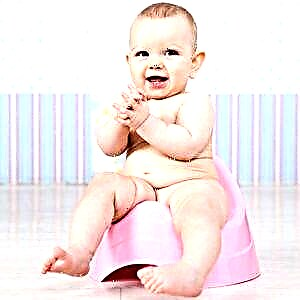 The primary role is played by the level of development of organs that are directly involved in ridding the body of metabolic products: the bladder, urinary tract, rectum, abdominal muscles, anal and urethral sphincters.
The primary role is played by the level of development of organs that are directly involved in ridding the body of metabolic products: the bladder, urinary tract, rectum, abdominal muscles, anal and urethral sphincters.- Equally important is the degree of formation of the central nervous system, first of all, the cerebral cortex.
- Another important condition is the degree of activity of close relatives, that is, their desire to teach the child to go to the toilet.
These three conditions are related and naturally complement each other. Analysis of these factors allows us to draw obvious and extremely important conclusions. Among them:
- the sooner parents start potting the child, the more time and effort it will take to learn this skill.
- the more developed the baby is physiologically, the faster he will begin to write and poop into a night vase.
Can these factors and findings be ignored? Certainly. However, in this case, teaching a child to potty business will be accompanied by various problems, which we will talk about below.
The Challenges of Early Learning
On the forums, there are often comments from patient and active mothers who declare that their children at 10 months (and sometimes almost at 5 months) can write after the cherished sounds of "pee-pee" and poop after the characteristic groaning "ah-ah -and".
Such "successes" can be easily explained. The characteristic sounds made by parents lead to the formation of a reflex in the child: the connection between the sounds "pee-pee" and urination. There is no need to talk about the emergence of an act of will.
It is not special sound signals that should induce the baby to go to the potty, but a physiological process, which is accompanied by overflow of the bladder or rectum.

Problems with seemingly formed skills can begin at two years old or a little earlier. The kid, already at 9 or 10 months old, has learned to sit on a night vase, suddenly refuses to write and poop in the same way, actively protesting against planting.
Experts associate such situations with the physiological maturation of the child. Natural control over the filling of internal organs begins to form, and the parents, with their pee-pee, force the baby to empty the still empty bladder.
Thus, parents' ignorance of how and when to potty train their child often leads to the development of very superficial and unstable neatness skills.
It is even worse when adults, frustrated by childhood failures in the form of puddles on the carpet, stained panties or fear of a pot, begin to "abuse" the baby: they force him to sit on a hygienic device, forbid him to get up early, etc. This cannot be done!
What time to potty train the child?
So, based on physiological norms, we can conclude that teaching babies the skills of neatness before 12 months is not justified by anything other than the parental desire to get rid of annoying diapers as soon as possible. Of course, this desire is understandable.
Not sure how to wean your child from diapers? Be sure to read the most detailed and meaningful article by a child psychologist, which discusses the 3 main ways of weaning and many useful tips.
However, the question of at what age a child should be potty trained remains open. Knowledge of the main stages of the formation of reactions associated with teaching pottery etiquette will help to answer it. These periods were identified by Professor Alexander Kazmin in his work "Diary of a child's development from birth to three years."
The main stages of the formation of toilet skills
| Approximate timing of the emergence of the skill | Skill description |
|---|---|
| 14 months | The child reacts negatively to wet or dirty pants. |
| 18 months | Reacts to having to go to the toilet with restless behavior or sounds. |
| 22 months | He tries to explain to his parents that he wants to write or poop by all available means - for example, gestures, but not words. |
| 2 years old |
|
| 2 years 3 or 5 months | Begins to beg for a pot using words. |
| 3 years | Under the guidance of parents, he copes with emptying the bowels and bladder (he takes off his panties, sits on the pot, pulls on his clothes). |
The majority of domestic and foreign pediatricians, when asked at what age to potty train a child, answer the same way - at 1.5-2 years old. It is in this age period that the baby matures physically and psychologically and is ready to acquire full-fledged neatness skills.
It should be understood that the time of formation of correct conditioned reflexes is strictly individual. Some children already know how to use a pot consciously at a year old, while others even at 3 years old cannot get used to a night vase.
How to potty train a small child?
If you decide to start teaching your baby toilet etiquette, the recommendations of specialists (including Dr. Komarovsky) will come in handy.
Of course, the following tips and rules apply more to one and a half or two year olds, but they will also help if parents do not know how to potty train a child at 1 year old.

5 main stages:
- First of all, show your baby the pot and explain what it is for. Rubber toys with holes can help. In such a bear and baby doll, they collect water and release it into a night vase, telling that the toy is peeing.
- How to teach a child to potty? At first, the baby is planted after waking up, before and after eating, before falling asleep and during the day and after it, before and after a walk, before going to bed for a night's sleep.
- Now you should stop using diapers during the day. So the child will be able to study his body, find out what the genitals and soft spot are for. He will also establish the relationship between organs and urination and defecation.
- Whenever a child succeeds in asking for a potty and doing his "wet things", he should be praised. But rewards shouldn't be in the form of toys or treats. Enough of the usual words of approval.
- When the child begins to sit on the potty on his own, without reference to the time of day, it means that the final stage of training has come. It is necessary to consolidate the result obtained by monitoring the characteristic signs of readiness for the toilet - straining and redness of the face.
Little tricks
If you still have no idea how to potty train a one-year-old child, or if an older baby has "misfires", some tricks will come to the rescue:
- the learning process will be simplified if there is an older child in the family who already knows how to use the potty. In this case, the firstborn will be able to show the younger how to use an unfamiliar device;
- we teach the child to potty carefully, not too zealous. There is no need to keep your baby on the night vase for more than 5 or 7 minutes. If you force him, he will begin to refuse to even come close to such an unpleasant subject;
- it is necessary to dress the baby very easily and simply. That is why experts advise starting training in the summer, when children are wearing a minimum amount of clothing. And the things themselves should be without belts, buttons, strings and buckles;
- put the night vase within the reach of the baby. Then he will be able to relieve himself on his own, and the mother will have a reason to celebrate, albeit a small, but victory. The pot can be installed in the nursery, not far from the play area;
- in order for the child to definitely like the hygienic device, it must be chosen together with the future owner. Go shopping or look at a pot in a chain store, focusing on the preferences of the crumbs (images of animals, favorite characters);
- you can use various books when teaching the skills of neatness, which reveal the meaning of the purpose of a night vase. For example, among mothers such works as "Fedya the Bear and the Pot", "Max and the Pot" are very popular.
How long will the training take? Everything is purely individual. Some babies, especially if they are physiologically prepared for bladder and bowel control, can acquire the skill in 2 to 3 weeks. Others do it in a few months.
If the mother thinks that the process is being excessively delayed, and the result is needed right now, you can resort to quick methods.
How to potty train your child in 7 days: basic steps
The Voluntary Baby System, developed by Gina Ford, has helped many mothers who don't know how to quickly potty train their babies.
This method should be used only if the child is already 18 months old and knows how to perform the simplest actions: he takes off his pants, understands the requests of adults.
- first day. After waking up, they get rid of the diaper, explaining this to the baby by the fact that he has already grown up, so he will now wear panties. Then the child needs to be seated for ten minutes so that he pee and poop. If the attempt fails, repeat the process every quarter of an hour. You can sit down next to and explain to the baby what the skill of neatness is needed for;
- second day. Now you need to carefully monitor children's behavior so as not to miss any sign of readiness to go to the toilet. With each such sign, a pot should be offered to consolidate yesterday's successes;
- third day. Behavior tactics remain the same, but in addition you need to get rid of diapers even while walking, so as not to confuse the child. Before a walk, you should do "wet things", and on the street often ask if the baby wants to write. You can take a pot with you so as not to go to the bushes;
- fourth - seventh days... On the fourth day, both the child and you already approximately know at what intervals you should use the potty. And if the baby is carried away by toys and forgot about the need, you remind him. For every success of the child, you need to praise, because mom's encouragement is a wonderful incentive to acquire a skill.
In just a week, according to the author and the parents, it is possible to instill in the baby hygiene skills. But even if after 7 days "misfires" will be observed, you should not despair or, moreover, scold the baby. Everything will definitely work out very soon.
How to potty train a child in 3 days: terms and conditions
In the event that it is necessary to introduce the baby to the pot as soon as possible (for example, the baby will go to kindergarten or go on a trip very soon), the methods of emergency accustoming children to a hygienic device will be useful to parents.
Of course, in such a short time, not a single child will be able to immediately switch from diapers to potty, but babies will have a base for mastering toilet etiquette.

Methodology rules
The three-day method will work only if the child is older than one and a half, but less than two years old. In addition, the baby is able to explain in an accessible way that he wants to pee or poop, seeks to quickly get rid of the spoiled diaper.
How to potty train a child in 3 days? First of all, after making sure that the baby is ready for the process, you need to acquaint him with the upcoming changes. Such an acquaintance begins in advance - about two weeks before active steps.
Preparation consists of several steps:
- get a pot (if you don't already have one), explain to your baby every day why this device is needed. You can also carry out instructions in an adult toilet, telling that the toilet is the same pot, but for adults;
- tell 7 days before the event that you will soon have to get rid of diapers, and instead of them panties and a pot will appear. Buy baby underwear for "adult" kids. Let the panties be with the image of your favorite characters;
- Mom will need three days in a row to be with the baby all this time. Therefore, you should take a Friday or Monday day off so that the technique is not interrupted, and enlist the support of your spouse;
- since you will have to constantly be with the baby for 3 days, you need to prepare in advance entertainment for him and yourself: cartoons, movies, games, books - everything that will allow you not to get bored and not get annoyed.
As soon as it is possible to prepare everything, you should proceed to active actions, carefully following all the recommendations of specialists.
First day
In the morning, as soon as the baby wakes up, the diaper is removed from him. It is allowed to put on the child underpants or leave him to walk naked, if, of course, the temperature in the room and the season contribute to this.
The night vase is placed in the children's room, closer to the baby. By the way, he can be given more liquid: water, milk or juice.
This is necessary for the child to want to empty the bladder. Or just place a drinker with your favorite drink next to your baby.
 Parents watch their child closely, tracking every sign that he wants to use the toilet.
Parents watch their child closely, tracking every sign that he wants to use the toilet.
Ideally, the baby should notice a clear relationship between the urge to pee and planting on the pot. You can put your child on a night vase every 20 minutes.
It is for such painstaking work that at least two adults are needed.They will have a significant load, since you need to track every attempt to urinate so that the connection is fixed in consciousness.
How to potty train very quickly? For any successful attempt, be sure to praise the baby.
Moreover, you need to say not faceless phrases like "well done", but specifically explain why you praise the child: "Clever, that he peed in the pot."
Failures, on the other hand, should be skipped without paying any attention to them. Moreover, you cannot scold or blame the baby so that he does not have negative associations associated with the pot.
Before falling asleep in the evening, it is allowed to put on a diaper. Let the baby sleep well before the next day.
Second day
Today you can take your child for a walk outside without a diaper. Naturally, it is better not to go far from home, so that in case of an unpleasant "embarrassment" you quickly return to the apartment. This is especially true in the autumn-winter period.
They go out into the street after the baby pees and poops. In the warmer months, you can take with you clothes for changing and a second pot for the administration of natural needs. After a successful attempt, be sure to praise the child.
Third day
On the last day, one more walk should be added so that the baby controls the process of emptying the bowels and bladder both at home and on the street.
 Before any regime event (walk, daytime nap), it is necessary to put the child on a night vase. The same procedure is repeated upon returning home and upon waking up.
Before any regime event (walk, daytime nap), it is necessary to put the child on a night vase. The same procedure is repeated upon returning home and upon waking up.
If you do not know how to potty train a child at 2 years old as soon as possible, a three-day course will come to the rescue. At the end of the technique, babies usually respond well to the pot, often even land on it on their own.
It is best to do without clothes, but if the room is cool, you need to choose the right things - without buttons, shoulder straps, zippers and other fasteners. Otherwise, the child will not be able to quickly take off the underwear and will do “wet or dirty business” right into the panties.
Potty training in 1 day: is it possible?
The shortest possible course of teaching a child to use a night vase was developed by Nathan Ezrid and Richard Fox. In their opinion, even in 24 hours it is possible to instill in the kid the skills of neatness and "make friends" with the pot.
They use this method if the baby is already 2 years old, he understands the speech addressed to him and can be explained according to the age with the parents. You should also enlist the support of all household members, since the mother will have to be with the child all day.
Potty training in 1 day implies the provision of some necessary items, among them:
- rubber doll with a hole to demonstrate urination;
- the pot itself;
- favorite children's drinks;
- disposable underpants.
The more the child drinks, the more often he has the urge to empty his bladder. Therefore, the sooner the parents will be able to teach the baby to use the pot. Therefore, it is necessary to give your child more liquid.
So that nothing distracts the baby from the learning process, you need to retire with him in the room and limit contact with other household members. Then they show the baby where the night vase stands, teach him how to pull and pull his panties.
 Since emptying the bladder presupposes complete relaxation, in simple words, they convey to the baby the idea that he needs to sit quietly on the potty and wait until “the water flows”.
Since emptying the bladder presupposes complete relaxation, in simple words, they convey to the baby the idea that he needs to sit quietly on the potty and wait until “the water flows”.
Demonstrate with the example of a rubber doll what you expect from your child. Show how to sit down, relax, and get up after writing to reinforce the instruction. Be sure to praise the baby for every successful action, using verbal approval, a hug.
How to potty train a child in 1 day? It is important to pay special attention to personal hygiene. After each urination, you need to help the baby to pour the contents of the night vase into the toilet and wash your hands with detergent.
Opinions about this technique are mixed. Some mothers recognize its effectiveness, while others note that it is almost impossible to teach a baby to write and poop in a pot in one day.
Potty training for a girl and a boy: are there any differences?
Often, even the gender of the child affects the speed and characteristics of teaching neatness skills. Many experts and parents point out that little ladies are more obedient and assiduous than little boys.
Girls try to imitate their mother in everything, so it is somewhat easier for them to understand the principle of the process. And due to natural perseverance, many babies spend more time on the potty, which significantly increases the likelihood of a safe ending of the event.
However, some girls are very shy - which is why they prefer to endure the urge to empty the bladder, which ultimately leads to wet pants.
Young gentlemen are more active, not as assiduous and observant as girls, and are more drawn to their fathers. And since dads spend a lot of time at work, the boys' skills will come a little later. Mom can't show you how to write while standing.
Experts advise taking into account the gender of the child when purchasing a useful device. For babies, a product with a rounded hole is more suitable, for a boy it is worth picking up a pot with a special notch and a roller that will prevent splashing.
How to potty train a girl? The baby's training is standard. But the process of teaching a boy is slightly different. A young gentleman should first be taught to use a night vase while sitting, since the emptying of the intestines and the bladder at such a young age occurs simultaneously.
Only after that do they switch to the “male” version. Let dad show him, and then mom will only have to follow the accuracy of the crumbs, which at first will necessarily spray everything around. The problem of how to potty train a boy is best solved in the game. This is the perfect way to learn.
Choosing a pot for a child
You can understand how to properly teach your baby to use a night vase if you choose the most suitable hygiene device. Fortunately, there are a variety of pot models in children's stores.
However, making a choice based solely on the color of the most important accessory is wrong. At such a young age, the child does not really care whether the pot is pink, blue or green.
When purchasing a night vase, parents need to pay attention to several important characteristics:
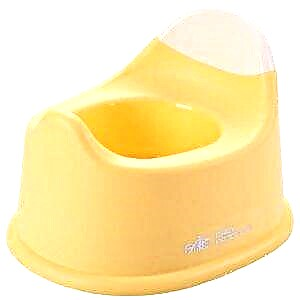 Anatomical structure. As noted above, girls need to take an accessory with a round notch, and boys - with an oval one. It is also worth giving preference to pots that resemble a saddle, as this will help the baby to sit directly on the hygiene device;
Anatomical structure. As noted above, girls need to take an accessory with a round notch, and boys - with an oval one. It is also worth giving preference to pots that resemble a saddle, as this will help the baby to sit directly on the hygiene device;- Material. Products made of high-quality plastic are ideal. First, they are cheaper than ceramic or metal fixtures. Also, the plastic does not cool much in the room, so the child will not feel unpleasant sensations when planting;
- Stable construction. As soon as the baby starts going to the potty, it is important to consolidate positive emotions. And so that the child does not fall with the contents of the night vase and inflame dislike for her, you need to choose products that stand well on the floor;
- Lack of frills. There are products in stores with a variety of effects: sounds and light. Such additional functions attract the baby, but he can perceive the pot as a toy, which we do not need.
Of course, every mother thinks, they say, I can buy the best pot model for her beloved baby. However, you should not get too carried away, it is better to take a stable, plastic night vase without additional functions.
Modern manufacturers of hygiene products for children offer to purchase special pants or diapers for training in neatness skills. Such "training" means are characterized by a layer that remains wet and leads to perceptible inconvenience.
To get dry and clean, the child tries to remove the uncomfortable diaper and relieve himself in the pot. In this case, it becomes somewhat easier to accustom the baby.
Problems when teaching a toddler
Unfortunately, teaching children hygiene skills does not always go smoothly. There is both a regression of skill and all kinds of fears of the pot. In addition, some children, due to health problems, are not able to independently learn to write in a night vase.
Step forward - two steps back
Often, mothers note paradoxical situations when a child who knows how to use a potty suddenly refuses to sit on it. And if the parents insist, then they throw a real tantrum. There are several probable reasons for this phenomenon:
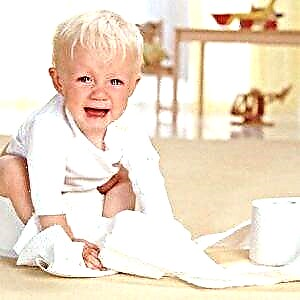 Any changes in the established way of life, be it adaptation to the kindergarten, moving, the birth of a younger brother / sister, can be perceived by the baby extremely negatively. Outwardly, this is manifested by a rejection of habitual actions and a regression of skills. For example, the baby starts to pee in the pants again.
Any changes in the established way of life, be it adaptation to the kindergarten, moving, the birth of a younger brother / sister, can be perceived by the baby extremely negatively. Outwardly, this is manifested by a rejection of habitual actions and a regression of skills. For example, the baby starts to pee in the pants again.- By the age of three, the child enters another crisis period, which is accompanied by rebellion, self-will, unwillingness to listen to the opinion of adults. It is likely that the baby will begin to do the opposite - for example, give up sitting on the potty.
- Scandals in the family, other domestic troubles that occur in front of children's eyes, negatively affect the behavior of the child. Some children rebel, while others withdraw into themselves. In both cases, skill regression occurs.
- If the baby is sick, his teeth are teething, he was given a routine vaccination, you can observe a temporary refusal to use the pot.
To cope with the difficulties that have arisen, you need to find out the root cause of the unwillingness to relieve yourself in a night vase. Once you get rid of the source of the problem, you can move on to retraining.
Fear of the plastic "friend"
Another common situation is the irrational fear of the pot. Parents in such a situation simply cannot put the baby on it, because the child cries, breaks loose, fights in hysterics at the mere sight of a hygienic accessory.
There are several sources of this behavior:
- Potty training too early, when the baby is not ready in all respects.
- The stinginess of parents to praise the success of the child and harsh punishment for failure.
- Not a very good introduction to the night vase. For example, the baby was seated on a cold object, which, moreover, turned out to be unstable.
- Physiological or psychological constipation, in which the baby forms an association: painful sensations when planted on a pot.
- The usual childish shyness or unwillingness to defecate and urinate in front of loved ones.
To change the situation, it is necessary to leave the child alone for a while, wait until his fears are forgotten. Those mothers who run after a crying baby with a pot at the ready are wrong. Such short-sighted behavior will only increase childhood phobia.
Experts recommend replaying a disturbing situation in game plots. Let the baby plant dolls, robots, soft toys on the pot. The main task is to evoke positive emotions directly to the night vase and sitting on it.
Create fabulous potty-themed therapeutic stories. In such stories, a kind and sad pot waits for its owner to play with it, and then pee and poop into it. The plot is limited only by the parental fantasy.
The following technique may work as well. Eyes and a smiling mouth made of adhesive paper are glued to the plastic accessory. You can additionally decorate the pot with figures depicting your favorite characters of the baby.
Medical factor
Sometimes problems with instilling hygiene skills in a child are not related to psychological, but medical factors. If daytime and nighttime involuntary urination is observed after five years, it is time to see a doctor.
 Uncontrolled urination can be caused by several problems:
Uncontrolled urination can be caused by several problems:
- congenital pathologies of the genitourinary organs;
- inflammation of the urinary tract;
- imperfection of the nervous system;
- heredity;
- prolonged stressful situations.
Two specialists are involved in the diagnosis and treatment of bedwetting: a urologist and a neurologist. First of all, parents should show the child to the urologist, who will examine the external genital organs (the girl may additionally be referred to a pediatric gynecologist).
In addition, the urologist may prescribe laboratory and instrumental studies such as general urinalysis, ultrasound examination of the kidneys and bladder. If an anomaly of the urological nature is excluded, the child is sent for consultation to a neurologist.
Several conclusions
The question of how to train a child to use the toilet is really relevant. At the end of the article, we have collected the most important recommendations and rules that can help adults to facilitate and speed up the process of teaching a baby hygiene skills:
- It is necessary to take into account the physiological and psychological readiness of children for learning.
- The optimal age, according to experts, is from one and a half to two years. Better later than before.
- It is necessary to prepare for the inevitable "misfires" when teaching a child, it is worth praising him more often and not paying attention to failures.
- You should not insist on emptying the intestines and bladder, make the baby push "as hard as he can."
- Long-term diaper rejection and accelerated potty training can be selected. It all depends on your mood and the characteristics of the child.
- It is better to purchase a night vase with your baby. So you will show the significance of the event and will be able to quickly "make friends" the pot and the child.
- If it didn't work the first time, wait. Set aside the plastic "buddy" on the mezzanine, forget about the problem for a couple of months, and then unobtrusively try again to give up diapers.
- If the child is afraid of the pot, wait until the fears subside, and only then start again acquaintance with this useful hygiene accessory.
- In case of uncontrolled urination after 5 years, you should definitely consult with a neurologist and urologist.
It should be understood that all the terms presented are rather arbitrary, therefore, parents, first of all, should focus not on the average data, the opinions of acquaintances and girlfriends, but on the characteristics of their child.
It is they who will answer the question of how and when to potty train. Well, many pediatricians advise to remember that almost all healthy children 5 years of age know how to walk in a night vase or toilet. Therefore, you should not be too zealous trying to prove something to your girlfriends and acquaintances.

 The primary role is played by the level of development of organs that are directly involved in ridding the body of metabolic products: the bladder, urinary tract, rectum, abdominal muscles, anal and urethral sphincters.
The primary role is played by the level of development of organs that are directly involved in ridding the body of metabolic products: the bladder, urinary tract, rectum, abdominal muscles, anal and urethral sphincters. Anatomical structure. As noted above, girls need to take an accessory with a round notch, and boys - with an oval one. It is also worth giving preference to pots that resemble a saddle, as this will help the baby to sit directly on the hygiene device;
Anatomical structure. As noted above, girls need to take an accessory with a round notch, and boys - with an oval one. It is also worth giving preference to pots that resemble a saddle, as this will help the baby to sit directly on the hygiene device; Any changes in the established way of life, be it adaptation to the kindergarten, moving, the birth of a younger brother / sister, can be perceived by the baby extremely negatively. Outwardly, this is manifested by a rejection of habitual actions and a regression of skills. For example, the baby starts to pee in the pants again.
Any changes in the established way of life, be it adaptation to the kindergarten, moving, the birth of a younger brother / sister, can be perceived by the baby extremely negatively. Outwardly, this is manifested by a rejection of habitual actions and a regression of skills. For example, the baby starts to pee in the pants again.